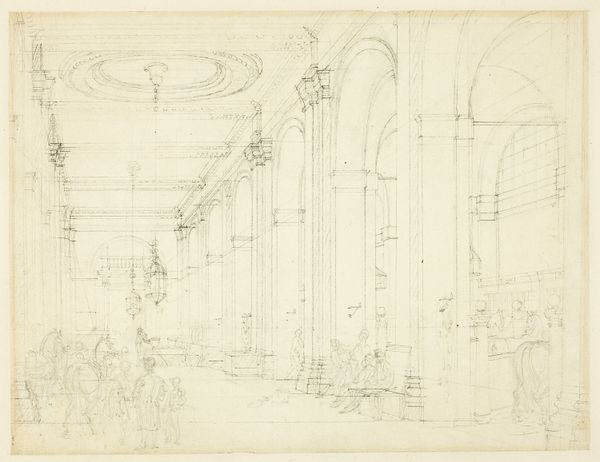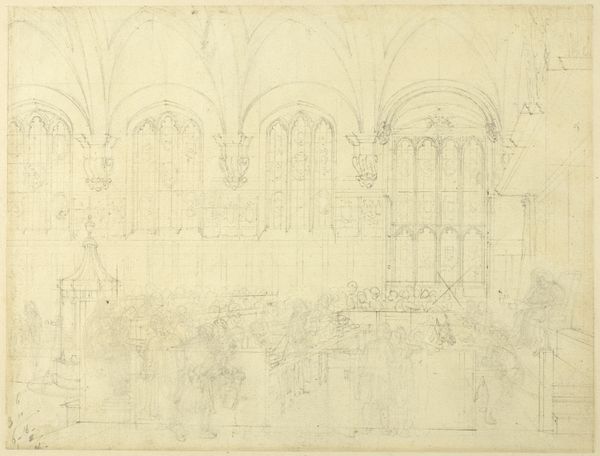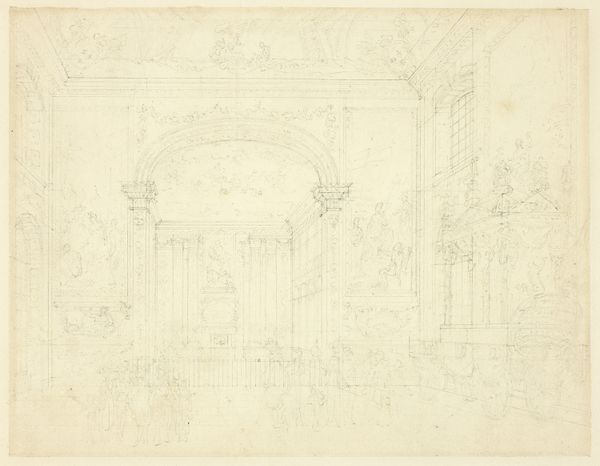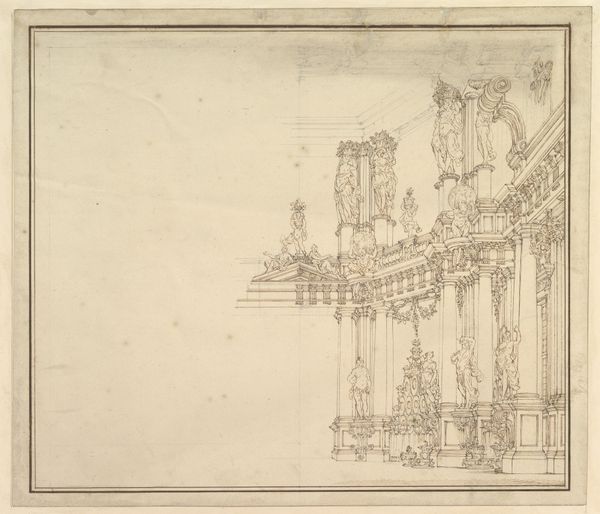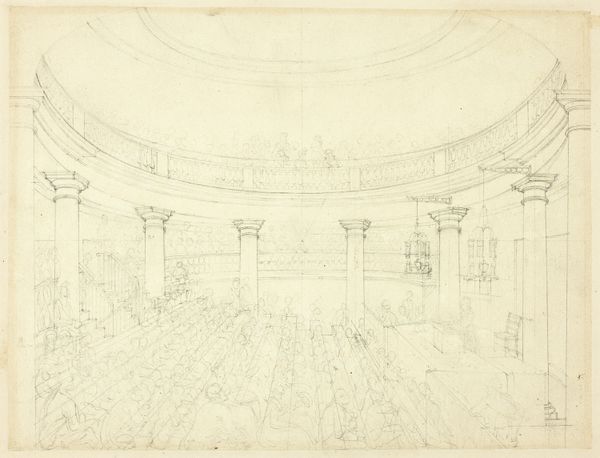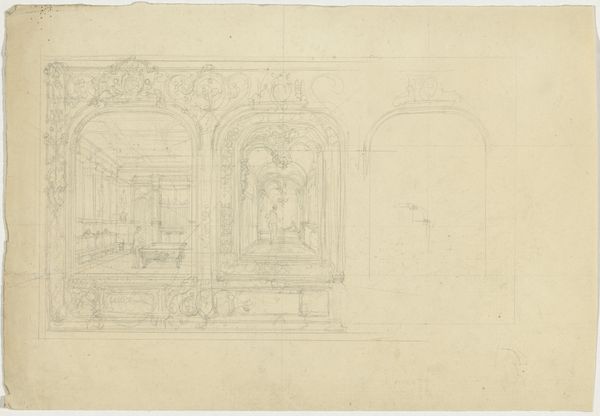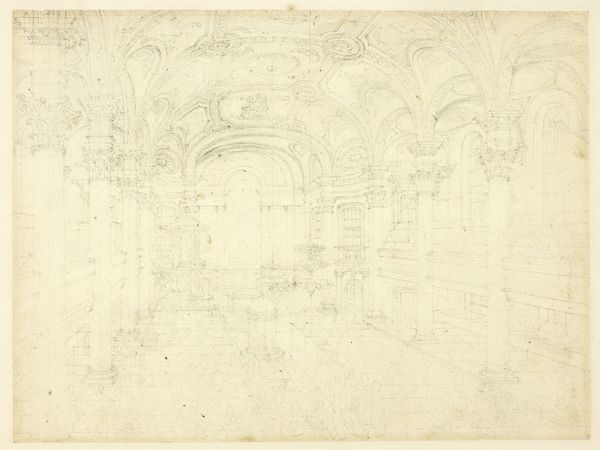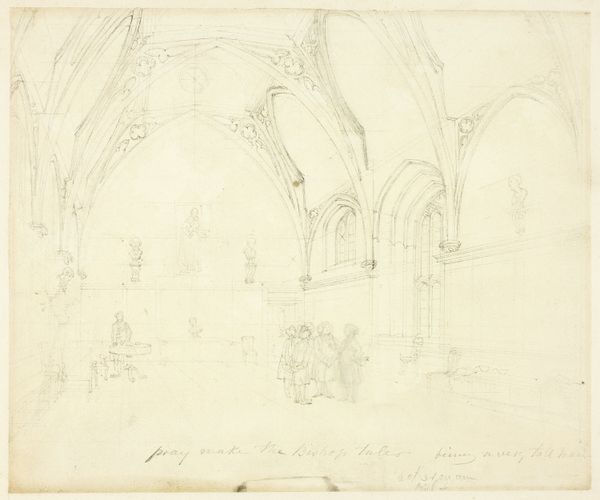
Study for Pantheon Masquerade, from Microcosm of London c. 1809
0:00
0:00
drawing, print, paper, graphite
#
drawing
#
neoclacissism
# print
#
landscape
#
paper
#
form
#
romanticism
#
line
#
graphite
#
cityscape
#
history-painting
#
academic-art
Dimensions: 195 × 257 mm
Copyright: Public Domain
Curator: This graphite drawing, a study for "Pantheon Masquerade" by Augustus Charles Pugin from around 1809, showcases an interior brimming with activity. It’s currently held at The Art Institute of Chicago. Editor: It has a certain airy quality, doesn't it? Despite the density of figures, the sketch's lightness, the ethereal architectural skeleton, dominates the feeling in this piece, providing it a sense of fleeting moment. Curator: Precisely. Pugin meticulously constructs the interior space. Note the repetitive gothic arches echoed against the symmetry of the dome; a perfect visual framework for understanding his use of neoclacissism through the lens of academic formalism. He even emphasizes this concept by filling it with romantic line-work! Editor: Beyond the architectural structure, the drawing pulsates with human drama. Masquerades were laden with symbols, a sanctioned space where social roles could be questioned and identities explored beneath the veneer of costumes. What stories are hidden beneath those masks? Curator: The figures in the foreground offer us that contrast: while the architecture and space emphasize the importance of symmetry, order and purpose; these dancing figures offer something almost intangible. The composition creates meaning by playing with formal expectations of architectural renderings and historical paintings. Editor: And observe how Pugin strategically places that chandelier—a brilliant orb of light presiding over this temporary revelry. Chandeliers historically represented status, wealth, and enlightenment. It begs the question, what does enlightenment look like in such a highly structured yet permissive atmosphere? Curator: Yes, it all emphasizes the construction of social hierarchy through space. A lovely way to engage a viewer, drawing attention through use of positive space, while using the historical setting to deliver meaning on the importance of society, power, and… line work. Editor: Pugin’s study ultimately succeeds in prompting reflection on the spectacle of society, its latent symbols, and the continuous performance of identity. It encourages us to view history itself as a grand masquerade, costumed and carefully lit. Curator: Indeed, I can definitely see the success that lies with use of form that supports a function in this case, historical iconography; thank you for your reflections!
Comments
No comments
Be the first to comment and join the conversation on the ultimate creative platform.

